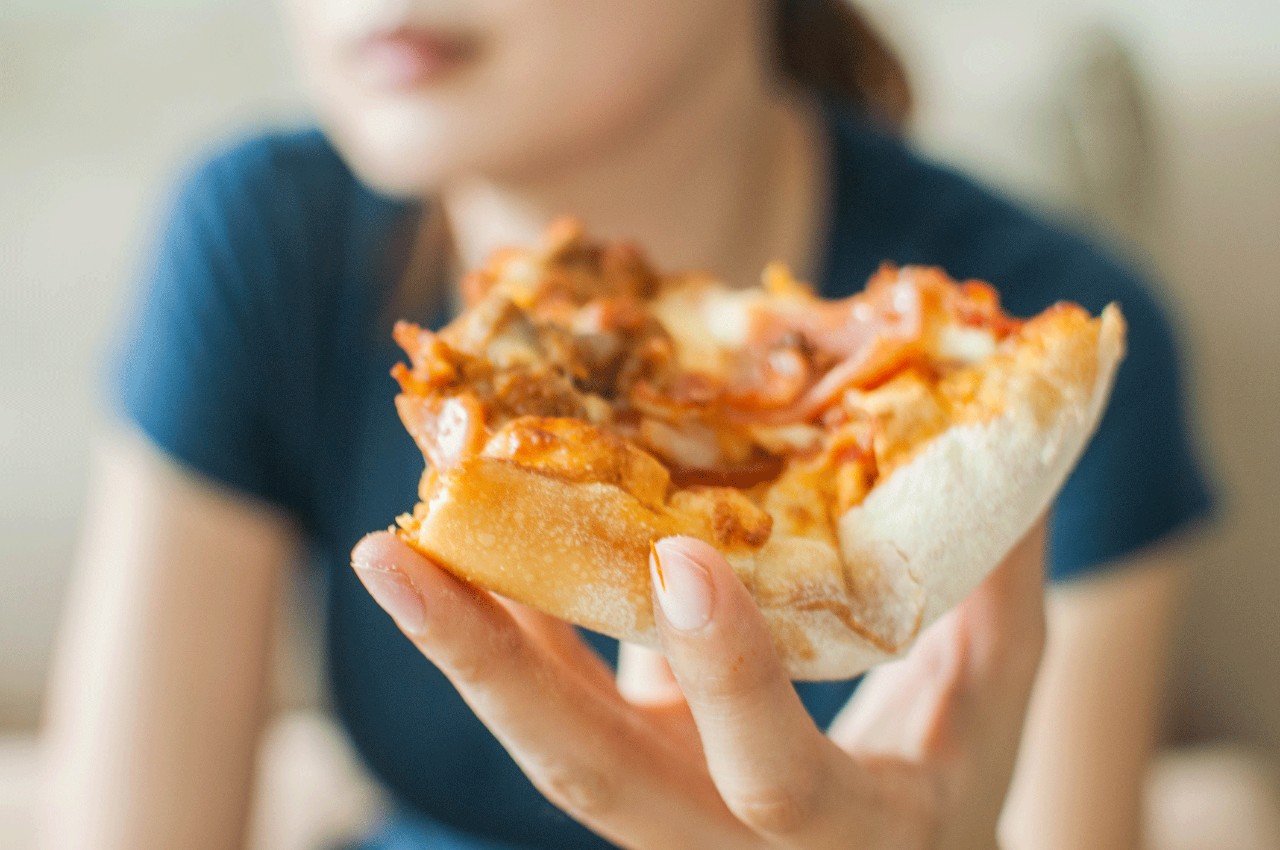Why Are Some Foods So Hard to Stop Eating?

Some foods are designed to be what food scientists call hyperpalatable — and we call addictive (think a myriad of snacks).
Arrange celery, carrot sticks, and potato chips around dip at a party. Which side item will run out first? There’s no question. If you supply roughly equal stacks of each item, the chips will fly, and you’ll probably have plenty of crudites for salad the next day.
Food scientists call the food we gobble up hyperpalatable. A combination of key ingredients makes them tastier than any one ingredient. By that definition, cooks are always aiming for hyperpalatable dishes and meals. But when a magic combination meets in one item, we eat too much of it.
YOU MIGHT ALSO LIKE: A High-Fiber Diet Can Have Life-Saving Benefits
In research, scientists decided to quantify what makes a food so irresistible. They defined three kinds of hyperpalatable foods by their winning combination: fat and sugar (ice cream, cake, chocolate), carbs and salt (pretzels, popcorn), and fat and salt (cheese, bacon).
Specifically, in the first group, more than 20 percent of the calories come from fat, and more 20 percent from simple sugars. In the fat and salt group, more than 25 percent of the calories come from fat, and each serving has a certain amount of salt. In the carb group, more than 40 percent of the calories come from carbs, and the salt content is slightly less.
Analyzing a database of common U.S. food items, the researchers found that nearly two-thirds met the definition. Hyperpalatable foods are cheap and easy to find and — no surprise to dieters — have contributed to the increase in obesity in the United States, which now affects a third of adults.
When researchers study addiction, they look for specific signs that your behavior is out of control. Most obviously, have you tried to quit and failed repeatedly? By that logic, many people, especially those with obesity, may have a food addiction. Not surprisingly, the foods they can’t eat moderately or quit usually are hyperpalatable.
In a study of people who seemed to eat addictively, a team at the University of Michigan analyzed the foods they said were their biggest problems. The list won’t surprise you: pizza, chocolate, chips, cookies, ice cream, French fries, cheeseburgers, soda, cake, cheese, bacon, fried chicken, rolls, buttered popcorn, breakfast cereal, gummy candy, and steak. Breakfast cereal? Carb and salt, plus often sugar too.
So how can you avoid overindulging? One step is to focus on food you have prepared yourself from basic ingredients and to eat food in its natural state, an apple rather than an apple-flavored bar, a baked potato rather than chips.
Keep your hyperpalatable binge foods out of the house, or limit the quantity. You might keep a food diary and simply observe when you are most likely to go for the ice cream or chips. Do you have a habit of eating at night while watching TV? A successful weight loss strategy is to eat only during a 10-hour window. This means that if you finish breakfast at 8:30 a.m., you need to finish dinner by 6:30 p.m. If dinner with your family runs later, eat breakfast at work at 9:30. Sticking to that discipline could be part of your strategy to avoid ice cream, if you enjoy it most at night.
Updated:
May 27, 2020
Reviewed By:
Janet O’Dell, RN